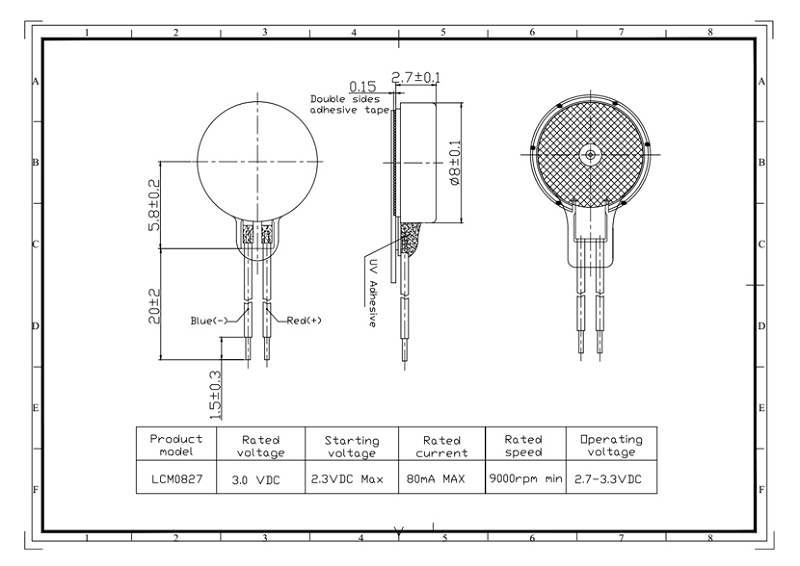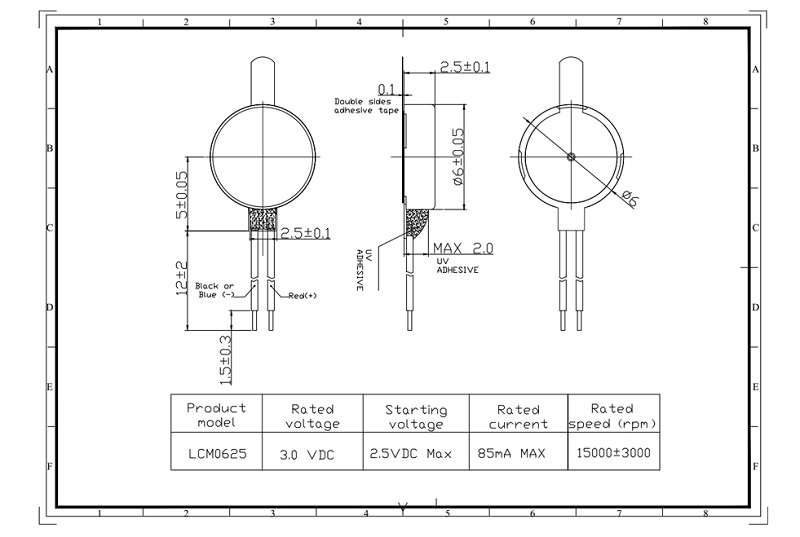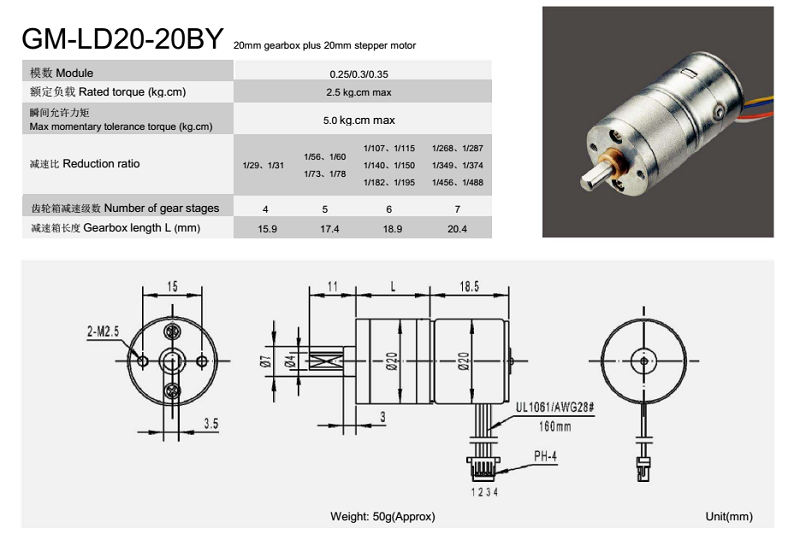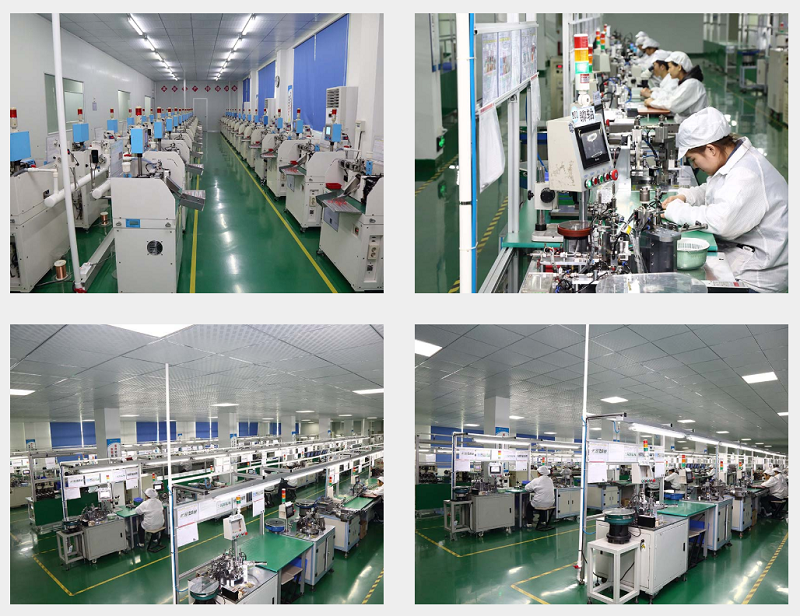Motors can be found practically everywhere. This guide will help you learn the basics of electric motors, available types and how to choose the correct motor. The basic questions to answer while deciding which motor is most appropriate for an application are which type should I choose and which specifications matter.
How do motors work?
Vibrating electric motor work by converting electrical energy to mechanical energy in order to create motion. Force is generated within the motor through the interaction between a magnetic field and winding alternating (AC) or direct (DC) current. As the strength of a current increases so does the strength of the magnetic field. Keep Ohm's law (V = I*R) in mind; voltage must increase in order to maintain the same current as resistance increases.
Electric Motors have an array of applications. Conventional industrial uses include blowers, machine and power tools, fans and pumps. Hobbyists generally use motors in smaller applications requiring movement such as robotics or modules with wheels.
Types of motors:
There are many types of DC motors, but the most common are brushed or brushless. There are also vibrating motors, stepper motors, and servo motors.
DC brush motors:
DC brush motors are one of the most simple and are found in many appliances, toys, and automobiles. They use contact brushes that connect with a commutator to alter current direction. They are inexpensive to produce and simple to control and have excellent torque at low speeds (measured in revolutions per minute or RPM). A few downsides are that they require constant maintenance to replace worn out brushes, have limited in speed due to brush heating, and can generate electromagnetic noise from brush arcing.
3V 8mm Smallest Coin Mini Vibration Motor flat vibrating mini electric motor 0827
Brushless DC motors:
The best vibrating motor of brushless DC motors use permanent magnets in their rotor assembly. They are popular in the hobby market for aircraft and ground vehicle applications. They are more efficient, require less maintenance, generate less noise, and have higher power density than brushed DC motors. They can also be mass-produced and resemble an AC motor with a constant RPM, except powered by DC current. There are a few disadvantages however, which include that they are difficult to control without a specialized regulator and they require low starting loads and specialized gearboxes in drive applications causing them to have a higher capital cost, complexity, and environmental limitations.
3V 6mm BLDC vibrating electric motor of brushless dc flat motor 0625
Stepper motors
Stepper motor vibrating are used for applications requiring vibration such as cell phones or game controllers. They are generated by an electric motor and have an unbalanced mass on the drive shaft which causes the vibration. They can also be used in non-electronic buzzers that vibrate for the purpose of sound or for alarms or door bells.
Whenever precise positioning is involved, stepper motors are your friend. They're found in printers, machine tools, and pr
ocess control systems and are built for high-holding torque that gives the user the ability to move from one step to the next. They have a controller system that designates the position through signal pulses sent to a driver, which interprets them and sends proportional voltage to the motor. They are relatively simple to make and control, but they draw maximum current constantly. Small step distance limits top speed and steps can be skipped at high loads.
Lower Price of Dc Stepper Motor with Gear Box from China GM-LD20-20BY
What to consider when purchasing a motor:
There are several characteristics that you need pay attention to when selecting a motor but voltage, current, torque, and velocity (RPM) are most important.
Current is what powers the motor and too much current will damage the motor. For DC motors, operating and stall current are important. Operating current is the average amount of current the motor is expected to draw under typical torque. Stall current applies enough torque for the motor to run at stall speed, or 0RPM. This is the maximum amount of current the motor should be able to draw, as well as the maximum power when multiplied by the rated voltage. Heat sinks are important are constantly running the motor or are running it at higher than the rated voltage in order to keep the coils from melting.
Voltage is used to keep net current flowing in one direction and to overcome back current. The higher the voltage, the higher the torque. The voltage rating of a DC motor indicates the most efficient voltage while running. Be sure to apply the recommended voltage. If you apply too few volts, the motor will not work, whereas too many volts can short windings resulting in power loss or complete destruction.
Operating and stall values also need to be considered with torque. Operating torque is the amount of torque the motor was designed to give and stall torque is the amount of torque produced when power is applied from stall speed. You should always look at the required operating torque, but some applications will require you to know how far you can push the motor. For example, with a wheeled robot, good torque equals good acceleration but you must make sure the stall torque is strong enough to lift the weight of the robot. In this instance, torque is more important than speed.
Velocity, or speed (RPM), can be complex regarding motors. The general rule is that motors run most efficiently at the highest speeds but it is not always possible if gearing is required. Adding gears will reduce the efficiency of the motor, so take into account speed and torque reduction as well.
These are the basics to consider while selecting a motor. Consider an application’s purpose and which current it uses to select the appropriate type of motor. An application’s specifications such as voltage, current, torque, and velocity will determine which motor is most appropriate so be sure to pay attention to its requirements.
Established in 2007, Leader Microelectronics (Huizhou) Co., Ltd. is an international enterprise integrating R & D, production and sales. We mainly produce flat motor, linear motor, brushless motor, coreless motor, SMD motor, Air-modeling motor, deceleration motor and so on, as well as micro motor in multi-field application.
Contact us for a quotation for production quantities, customizations and integration.
Post time: Feb-21-2019









